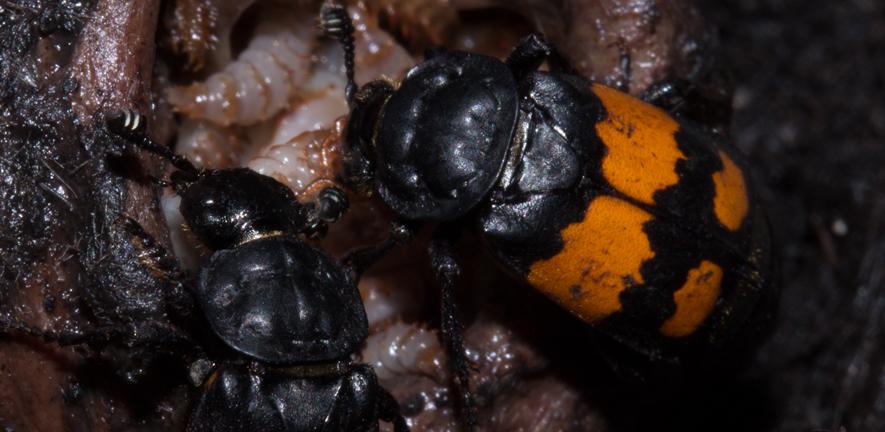
Submitted by Rachel Aucott on Thu, 28/05/2020 - 16:18
A new paper published in Evolution Letters shows how quickly animals can adapt to new environments, and how well they can fine-tune their adaptations to match local conditions.
Until about 4000 years ago, England was covered in ancient forest – ‘the Wild Wood’, as Oliver Rackham called it. In the Iron Age deforestation began, eventually creating small islands of woodland in an arable landscape. These are the woodlands recorded in 1086 in the Domesday Book and they have remained broadly unchanged ever since. Syuan-Jyun Sun and colleagues have spent the last 5 years studying the burying beetle populations that inhabit the woodland islands of Cambridgeshire.
Burying beetles breed on the dead body of small animals like mice. They shave off the fur, roll the flesh into a ball and bury it in a shallow grave, where it becomes an edible nest for their larvae. Up to four different burying beetle species can co-exist in the same woodland and they compete for the same dead bodies to breed upon.
Sun and his colleagues discovered that the largest burying beetle species breed best on the largest dead bodies, while the smallest species are specialised to breed on the smallest species. Medium sized beetles perform well on dead bodies of intermediate sizes.
However, Sun et al also discovered that some woods support only two species of burying beetle: they have no medium-sized beetles, for reasons that are still unclear. Sun et al. discovered that the smallest beetles in these woods have adapted to breed well on larger dead bodies, expanding to breed on the bodies that would otherwise be used by the missing medium-sized species. What is more, they consistently lay more eggs than their counterparts in a neighbouring population that is only 2.5km away, whatever the size of dead body they use for breeding.
Detailed analyses of the genome showed there is only a handful of differences between populations – and these differences are concentrated in genes known to be connected with egg-laying in other insects. One explanation is that the beetles’ ancestors were part of a large single population that inhabited the Wild Wood. Since deforestation, they have become confined to islands of woodland and evolved in different ways according to the specific local conditions within each wood.
S.J. Sun, A.M. Catherall, S.C.M. Pascoal, B.J.M. Jarrett, S.E. Miller, M.J. Sheehan, and R.M. Kilner. 2020. Rapid local adaptation linked with phenotypic plasticity. Evolution Letters. doi:10.1002/evl3.176
Photo credit: S.J. Sun
